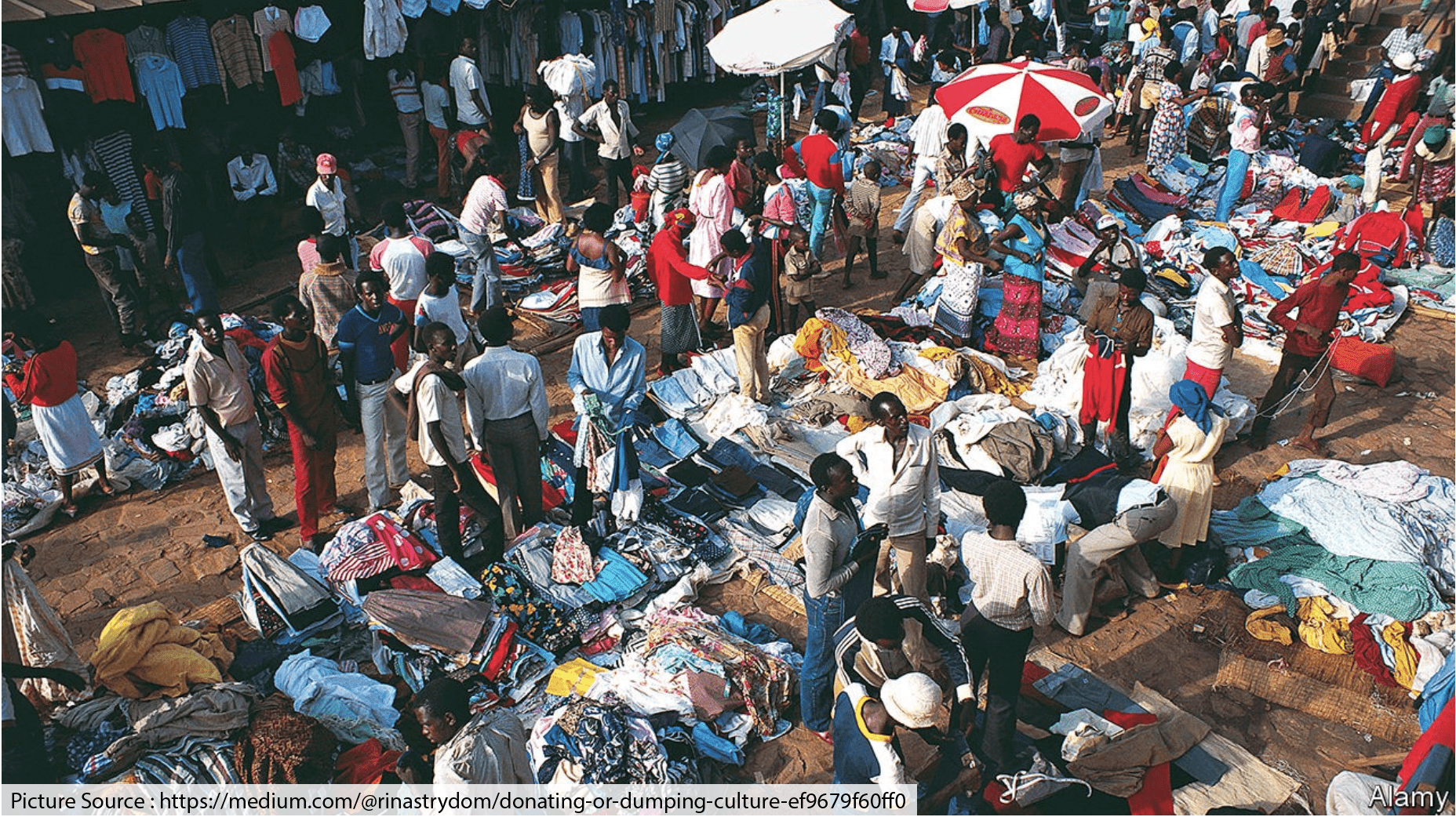Sitting in Ranikhet, hearing the chirping of birds, savoring the beauty of nature, a realization dawns; there is no better designer than nature.
From exotic birds to iridescent beetles, from sleek, patterned animal fur to delicate orchids, there is no end to the beauty of earth’s flora and fauna – it is no surprise that the natural world has long been an inspiration in fashion.
Alas, the human being has spoiled nature by overconsumption, exploitation, and overuse of natural resources in the name of Fast Fashion and has dented the whole world beyond repair.
A study in 2015 showed that the average garment is only worn about seven times. So, if you need something that lasts seven times, why focus on quality at all? It is just about quantity and the newness of it.
Today, most consumers spend less than their grandparents did. Generally, as consumers, we are now hooked on low prices and a constant influx of new styles and clothes. The inevitable result is that retailers or brands produce what they can sell. And if they can sell more cheap stuff, where quality does not matter, that is exactly what they are going to do.
The story is totally different for the African continent.
During my exploration days in Africa (traveled the entire length and breadth), trying to sell the apparel from India, one thing which came out prominently was we were expensive for the local market or perhaps the African market was not ready to receive new clothes. The market was very much tuned and organized for the second-hand clothing of dead white men’s clothes.
Before we move further, one must understand that Second-hand clothes link two sides of the same phenomenon. Overproduction and overconsumption of goods in the framework of an unequal global order, together with the active participation of various actors and social institutions in trade and consumption at the local level, explain the movement of second-hand clothes from countries in the North to countries in the South.

Second-hand clothes from an array of developed countries dominate local market stalls in sub-Saharan Africa. Across the African continent, second-hand clothes are a mainstay of informal traders, even accounting for the majority of clothing sales in some countries. In Nigeria, they are known as kafa ulaya (the clothes of the dead whites) and roupa da calamidade (clothing of the calamity) in Mozambique.
It seems after the end of colonialism; the plan was for Africans to produce their own clothes and other basic goods to help industrialize and develop economies as happened in China and South Korea. Yet in the 1980s and 1990s, clothing industries declined, and imports of used clothes increased.
African leaders were forced to liberalize their economies under political pressure from banks and governments in the west who had earlier lent them money, and to whom they owed massive interest repayments. Liberal economic reforms to the market meant the removal of barriers to trade, such as import taxes and quotas, which had protected new factories. Once fragile economies were open to imports – like cheap second-hand clothes – there was a wholesale collapse of vast swathes of local industry. Cheaper imported goods flooded African markets and workers in clothing factories lost their jobs.
They must understand, stopping the trade of second-hand clothes will not enable the development of clothing industries in Africa alone, but your old jeans and T-shirts are often unwittingly part of the problem.
It is a common misconception that old clothes donated to Oxfam and others are freely distributed in developing countries. While they can provide jobs, they also prevent development. But walking around the markets in Africa, one notices that many of the garments were donated to charity shops or placed in clothing recycling banks with the very best of intentions and the belief that they would be sold to raise money for good causes landed in Africa.
A significant percentage of the clothing sent to the main market, Kantamanto in Accra, Ghana— one of the largest second-hand clothing markets in the world — is unsaleable. And without the systems in place to recycle it, around 40 percent of the used clothes imported into the country end up rotting in landfill sites. More than 50 tonnes a day are being discarded, and many items are being dumped on wasteland and beaches and then finding their way into the sea.
Now the quality of some stock has become so poor that it has no resale value at all, despite the best efforts of the market’s highly skilled tailors and seamstresses.
Too much clothing is being manufactured because of fast fashion, and a lot of it is not even made for a second life. Traders constantly reference the fabric as not being of good quality. They cannot sell it and so it ends up being thrown away.

But, not surprisingly, High Street fashion chains are showing no sign of cutting back on the vast amount of new clothing they produce each year, preferring to invest instead in recycling initiatives.
As consumers worldwide buy more clothes, the growing market for cheap items and new styles is taking a toll on the environment.
On average, people bought 60% more garments in 2014 than they did in 2000. Fashion production makes up 10% of humanity’s carbon emissions, dries up water sources, and pollutes rivers and streams.
What’s more, 85% of all textiles go to the dump each year. And washing some types of clothes sends thousands of bits of plastic into the ocean.
Here are the most significant impacts fast fashion has on the planet.
Clothing production has roughly doubled since 2000.
While people bought 60% more garments in 2014 than in 2000, they only kept the clothes for half as long.
In Europe, fashion companies went from an average offering of two collections per year in 2000 to five in 2001 and even more in later years.
Some brands offer even more. Zara puts out 24 collections per year, while H&M offers between 12 and 16.
A lot of this clothing ends up in the dump. The equivalent of one garbage truck full of clothes is burned or dumped in a landfill every second.
In total, up to 85% of textiles go into landfills each year. That is enough to fill the Sydney harbor annually.
Washing clothes, meanwhile, releases 500,000 tons of microfibers into the ocean each year — the equivalent of 50 billion plastic bottles.
Many of those fibers are polyester, a plastic found in an estimated 60% of garments. Producing polyester releases two to three times more carbon emissions than cotton, and polyester does not break down in the ocean.

In Uzbekistan, for example, cotton farming used up so much water from the Aral Sea that it dried up after about 50 years. Once one of the world’s four largest lakes, the Aral Sea is now little more than desert and a few small ponds.
Globally the wholesale used clothing trade is valued at more than £2.8bn. Although it is more sustainable to keep wearing old clothes, proponents argue that exporting second-hand clothes around the world reduces waste.
But this green argument often ignores one important question: what are the impacts of used clothing overseas?
We have completely devalued what clothing is, and do not know how we come back from treating fashion like a plastic bag or a plastic bottle.
RELATED TOPICS:#Apparel,Sanjay Lal
Leave a comment
Our email address will not be published. Required fields are marked *







4 Comments
DharamNov 13, 2021 at 11:40 am
Sir, awesome article....full of information with in depth data analysis, its not only eye opener but it also opens up our mind. Thanks eagerly waiting for another one. ?
RekhaNov 13, 2021 at 11:16 am
Very hard hitting article ! It’s time we cleaned up our act !! Everyone must vow to stop wasteful buying , fashion is just momentary but the harmful impact lasts for years !! We written indeed
Maj Gen Ranvir YadavNov 13, 2021 at 11:14 am
Very timely and very relevant article at a time when COP16 is in session..I also felt that Fashion Industry has big carbon footprint..Some very very relevant facts have been brought by without.. Overall an Excellent article..
Arun SaigalNov 13, 2021 at 10:28 am
Thank you for a very interesting insight. Very well researched and written